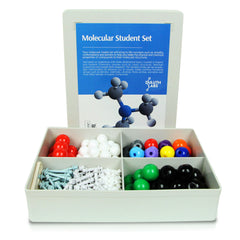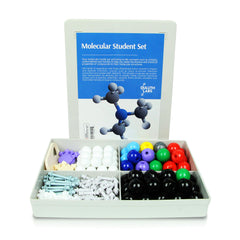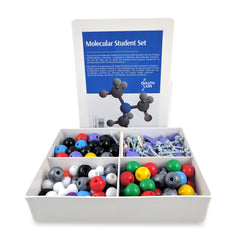BACKGROUND:
A chiral carbon is defined as a tetravalent carbon atom containing four different substituents around it. Due to having four different substituents, the molecule becomes optically active, which means it can shift the direction of plane-polarized light to the left or to the right.
When a molecule contains a chiral carbon, there is a high chance that the compound will be chiral, or optically active. Optical activity is only possible for compounds with mirror images that are non-superimposable. For compounds having more than one chiral center, it is harder to determine if the compound will be optically active because orientation around the two chiral centers are to be both considered.
Normally, compounds with two chiral centers have four possible stereoisomers. In these cases, there are two pairs of possible enantiomers. However, there are compounds with two chirality centers that do not exhibit chirality. This means that even though the compound has chiral centers, the compound is considered achiral.
An example of this is 2,3-dichlorobutane. If we are to draw the possible molecular representations for the compound, it is noticeable that there are only three possible stereoisomers. Two of the representations are mirror images of the compound but are superimposable. Since they are superimposable, the two representations are just considered the same. Compounds of this type are called Meso Compounds.
What Are Meso Compounds?
Meso Compounds are typically characterized by having an internal plane of symmetry. For the meso compound shown below, the internal plane of symmetry is in the middle of the C2 and C3. As shown in the figure, the two sides of the mirror seem to be just mirror images of each other.
Our Duluth Labs Molecular Set can be used to study the chirality of molecules. Students can manipulate structure and rotate readily molecules to see if the mirrored compounds are superimposable or not. In this post, we will create the structure of 2,3-dichlorobutane and show the three possible stereoisomer of the compound and identify which of the three is considered the meso compound.
MODELLING: Using our Duluth Labs Molecular Set Let’s Walk Through Building 3 Stereoisomers of 2,3-dichlorobutane.

Dichlorobutane is a chloroalkane prepared by free radical chlorination of chlorobutane. Some dichlorobutane molecules are considered as an important precursor for nylon polymers. For the purpose of showing a meso compound, a 2,3-dichlorobutane will be modeled.
You’ll need:
-
12 Carbon Atoms
-
6 Chlorine Atoms
-
24 Hydrogens Atoms
-
24 Small/short connectors (compact short bonds for hydrogen)
-
15 Medium connectors (single covalent bonds)
-
Molecular Tool (for Disassembly)
-
Molecular Tool (for Disassembly)
Put aside all the atoms and connectors needed.
Note: To complete the modelling successfully (sufficient number of atoms) you may need either our Duluth Labs MM-004 Set OR Duluth Labs MM-006 Set.
StereoIsomer Structure #1
-
1

1. To prepare the molecule, get a carbon atom (black) and connect 3 Hydrogen atoms (white) using short connectors.
-
2

2. Connect one carbon atom using medium connector to the last remaining hole.
-
3

3. Attach one chlorine atom (green) and one hydrogen atom to the second carbon using a medium and a short connector. .
-
4

4.Connect one carbon atom using medium connector to the last remaining hole.
-
5

5. Attach one chlorine atom (green) and one hydrogen atom to the third carbon using both a medium and a short connector.
-
6

6. Attach a methyl group (carbon with three hydrogen atoms attached to it via short connectors) to the last remaining hole.
-
7

7. Then flip the molecule so that the 2 chlorine atoms are pointing upwards. Also, have the methyl groups facing towards you.
Stereoisomer Structure #2
Create another structure for the compound above except the attachments of the chlorine and hydrogen atom of carbon 2 are interchanged.

Stereoisomer Structure #3

Create another structure for the compound above except the attachments of the chlorine and hydrogen atom of carbon 3 are interchanged.
Stereoisomers of Dichlorobutane
Lets’ figure out our Meso Compound!
1.Create a possible mirror image of all three different structures (feel free to use structure #3 as your changeable mirror image).



2. Test if the image and its mirror images are superimposable or non-superimposable.
Note: If the image and its mirror image are superimposable, they are considered meso compounds. If the image and its mirror image are non-superimposable, they are considered enantiomers.
-

Structure 1 Test : Meso Compound
-

Structure 2 Test : Enantiomers
-

Structure 3 Test : Enantiomers
The structure 1 is considered the meso compound as there is an internal mirror plane in between carbons 2 and 3. Structures 2 and 3 are considered enantiomers of each other.
PRACTICE EXERCISE
1. Create the structure of the Meso Compound possible for 1,2-dichloroethanediol. (This can be done by switching out the methyl groups in Dichlorobutane above with 2 OH (hydroxyl) groups.
You’ll need:
-
4 Carbon Atoms
-
4 Oxygen Atoms
-
8 Hydrogens Atoms
-
4 Chlorine Atoms
-
8 Small connectors (compact short bonds for hydrogen)
-
10 Medium connectors (single covalent bonds)
-
Molecular Tool (for Disassembly)
Put aside all the atoms and connectors needed.


















